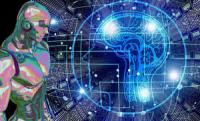-
Cities Ban Government Use of Facial Recognition
Oakland, Calif., last week became the third city in America to ban the use of facial recognition technology in local government, following prohibitions enacted earlier this year in San Francisco and Somerville, Mass. Berkeley, Calif., is also weighing a ban. The technology is often inaccurate, especially when identifying people who aren’t white men.
-
-
New Chip Device Identifies Miniscule Blood Residues for Forensic Applications
Criminologists use luminol to identify microscopic blood drops, as well as low hydrogen peroxide concentrations, proteins and DNA. These are all invisible to the naked eye but become visible through a chemical reaction known as “chemiluminescence.” Detecting biological residues using this method is cost effective and advantageous since the detected signal does not depend on an external light source.
-
-
Any single hair from the human body can be used for identification
Any single hair from anywhere on the human body can be used to identify a person. This conclusion is one of the key findings from a nearly year-long study by a team of researchers. The study could provide an important new avenue of evidence for law enforcement authorities in sexual assault cases.
-
-
Mass surveillance is coming to a city near you
The tech entrepreneur Ross McNutt wants to spend three years recording outdoor human movements in a major U.S. city, KMOX news radio reports. Conor Friedersdorf writes in The Atlantic that if that sounds too dystopian to be real, you’re behind the times. McNutt, who runs Persistent Surveillance Systems, was inspired by his stint in the Air Force tracking Iraqi insurgents. He tested mass-surveillance technology over Compton, California, in 2012. In 2016, the company flew over Baltimore, feeding information to police for months (without telling city leaders or residents) while demonstrating how the technology works to the FBI and Secret Service.
-
-
Shoe scanner may improve airport security
The types of shoes you wear when flying matter. And not just shoe types. Size, material, soles and heels are also very important. Why? Shoes can become dangerous vehicles for terrorists’ plots. DHS wants to prevent future incidents, and this is why S&T is working on a millimeter wave technology for screening shoes as part of the larger Screening at Speed Program.
-
-
Dystopian Future Watch: Is San Francisco’s facial recognition ban too little, too late?
Life just keeps creeping along, leading us step-by-step closer to living in a Philip K. Dick dystopian future—in real-time. And often, in our surveillance culture, we are willing participants to work alongside Big Brother. Harmon Leon writes in the Observer that Remember how fun it used to be to see facial recognition and retina scanning in sci-fi movies? We loved it in RoboCop and Blade Runner, right? Now, many of these biometrictechnologies have become a nightmarish reality.
-
-
Finding fake fingerprints
From a security perspective, what’s to stop a third party “lifting” your fingerprint, and creating a facsimile of its loops, whorls and arches with a piece of a skin-like rubbery material and then presenting this to the biometric device to gain access? The simple answer is nothing!
-
-
WhatsApp's loophole reveals role of private companies in cyber-surveillance
Last month, WhatsApp’s latest security flaw was discovered, a flaw which allow governments to spy on dissidents, activists, and journalists. An Israeli cyber company is reportedly behind the loophole — and not for the first time.
-
-
San Bernardino Court asked to review cell-site simulator, digital search warrants likely improperly sealed
Since the California legislature passed a 2015 law requiring cops to get a search warrant before probing our devices, rifling through our online accounts, or tracking our phones, EFF has been on a quest to examine court filings to determine whether law enforcement agencies are following the new rules.
-
-
Crime fighting got easier as burglars reveal all

The expertise of experienced burglars puts them streets ahead of householders, and even well ahead of other criminals, according to a new study. The results could lead to a step-change in how we fight this crime.
-
-
The forensic unknowns of 3D-printed guns
Proponents of the printed guns – 3D-printed with polymers from digital files – maintain that sharing blueprints and printing the guns are protected activities under the First and Second Amendments. Opponents argue the guns are concerning because they are undetectable and also untraceable since they have no serial numbers.
-
-
Dystopian Future Watch: Is San Francisco’s facial recognition ban too little, too late?
Life just keeps creeping along, leading us step-by-step closer to living in a Philip K. Dick dystopian future—in real-time. And often, in our surveillance culture, we are willing participants to work alongside Big Brother. “Remember how fun it used to be to see facial recognition and retina scanning in sci-fi movies?” Hermon Leon asks in the Observer. “We loved it in RoboCop and Blade Runner, right? Now, many of these biometric technologies have become a nightmarish reality. Let’s take a look.”
-
-
Locating a shooter from the first shot using cellphone
In the past several decades, militaries have worked hard to develop technologies that simultaneously protect infantry soldiers’ hearing and aid in battlefield communication. Now a French researcher has developed a proof of concept that uses the microphones in a TCAPS system to capture a shooter’s acoustic information and transmit this to a soldier’s smartphone to display shooter location in real time.
-
-
How artificial intelligence systems could threaten democracy

U.S. technology giant Microsoft has teamed up with a Chinese military university to develop artificial intelligence systems that could potentially enhance government surveillance and censorship capabilities. The advent of digital repression is profoundly affecting the relationship between citizen and state. New technologies are arming governments with unprecedented capabilities to monitor, track and surveil individual people. Even governments in democracies with strong traditions of rule of law find themselves tempted to abuse these new abilities.
-
-
The psychology behind solving cold-case homicides
Probing unsolved crimes from years or decades ago is a challenge for any police officer. But the task is made even more difficult because the very term “cold case” puts a dampener on expectations of success, according to a university criminologist whose latest book calls for a new investigative mindset in detectives who are assigned to re-open case files.
-
- All
- Regional
- Water
- Biometrics
- Borders/Immig
- Business
- Cybersecurity
- Detection
- Disasters
- Government
- Infrastructure
- International
- Public health
- Public Safety
- Communication interoperabillity
- Emergency services
- Emergency medical services
- Fire
- First response
- IEDs
- Law Enforcement
- Law Enforcement Technology
- Military technology
- Nonlethal weapons
- Nuclear weapons
- Personal protection equipment
- Police
- Notification /alert systems
- Situational awareness
- Weapons systems
- Sci-Tech
- Sector Reports
- Surveillance
- Transportation
Advertising & Marketing: advertise@newswirepubs.com
Editorial: editor@newswirepubs.com
General: info@newswirepubs.com
2010-2011 © News Wire Publications, LLC News Wire Publications, LLC
220 Old Country Road | Suite 200 | Mineola | New York | 11501
Permissions and Policies
Editorial: editor@newswirepubs.com
General: info@newswirepubs.com
2010-2011 © News Wire Publications, LLC News Wire Publications, LLC
220 Old Country Road | Suite 200 | Mineola | New York | 11501
Permissions and Policies
